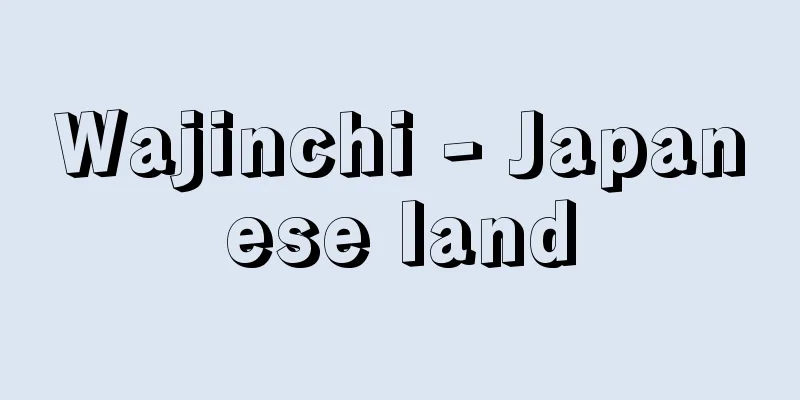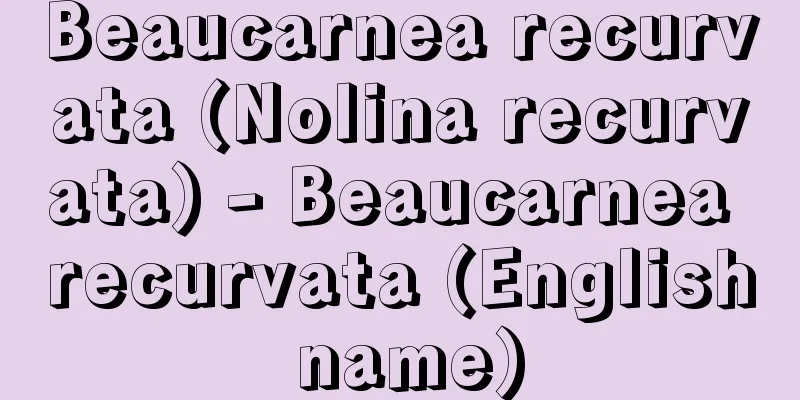Wajinchi - Japanese land

|
Also called Shamo-chi or Ningen-chi, this area was established in early modern Hokkaido as part of the Matsumae domain on the Oshima Peninsula in southern Hokkaido. It has changed over time, but in the 17th century, the border was between Kumaishi (Yakumo Town) to the north and Kameda (Hakodate City) to the east of Matsumae Castle, and the area up to Kumaishi was called Nishizai and the area up to Kameda was called Higashizai. Beyond this, the area was called Ezo-chi, and entry and exit was regulated by a guard post on the border. Although Ainu settlements existed at certain times, Wajin-chi was an area inhabited by Japanese people, and villages were formed as permanent residences of Matsumae domain residents. On the other hand, Japanese people were prohibited from living permanently in Ezo-chi. The clan's economic base was centered on Ainu trade, and in order to exclusively control trade, Wajinchi and Ezochi were strictly divided. Entry and exit was strictly inspected at the Okinokuchi government offices in Matsumae, Esashi, and Hakodate, as well as at the border guard posts. The entry and exit of Ainu into Wajinchi was particularly tightly regulated, and they were strictly prohibited from coming over for trade. The Wajinchi's livelihood consisted of herring fishing and kelp fishing, but after the herring fishing season at the end of the 18th century, fishing trips to Western Ezochi (the Japan Sea side) became popular, which led to Japanese settlement in Ezochi. However, the division between Wajinchi and Ezochi was clearly maintained until the end of the Bakufu-han system. Furthermore, at the end of the 19th century, the area of the eastern residence expanded to include Yamakoshinai (Yakumo Town). [Hiroshi Tabata] "On the existence and governance of the Ainu in Japanese territories" by Susumu Enomori (included in Ezo and Hokkaido - History and Lifestyle, 1981, Yuzankaku Publishing) Source: Shogakukan Encyclopedia Nipponica About Encyclopedia Nipponica Information | Legend |
|
シャモ地、人間地ともいわれ、近世北海道で松前(まつまえ)藩域として道南の渡島(おしま)半島部に設定された領域。時代により推移があるが、17世紀には、松前城下より北方の熊石(くまいし)(八雲町)、東方の亀田(かめだ)(函館(はこだて)市内)が境界で、熊石までを西在(にしざい)、亀田までを東在(ひがしざい)とよんでいた。以遠は蝦夷(えぞ)地とよんで区別し、境界の番所で出入りを規制していた。時期によりアイヌ集落も存在していたが、和人地は日本人の居住地で、松前領民の永住の村落が形成されていた。一方、蝦夷地での日本人の永住は禁止されていた。藩はアイヌ交易を経済基盤の中心としており、交易を独占的に管理するために和人地、蝦夷地は厳格に区分された。松前、江差(えさし)、箱館(はこだて)の沖之口(おきのくち)役所、あるいはこの境界の番所で出入りは厳重に点検された。アイヌの和人地への出入りはとくに強く規制されて、交易に渡来することは厳禁されていた。和人地内の生業は鰊(にしん)漁、昆布(こんぶ)漁などであったが、18世紀末の鰊不漁期以後、西蝦夷地(日本海側)への出漁が盛んになり、蝦夷地での日本人定住のきっかけとなった。しかし和人地、蝦夷地の区分は幕藩制の最後まで明確に保持された。なお19世紀末の東在の範囲は、山越内(やまこしない)(八雲(やくも)町内)まで拡大された。 [田端 宏] 『榎森進著『和人地におけるアイヌの存在形態と支配のあり方について』(『蝦夷地・北海道――歴史と生活』所収・1981・雄山閣出版)』 出典 小学館 日本大百科全書(ニッポニカ)日本大百科全書(ニッポニカ)について 情報 | 凡例 |
Recommend
Glass crafts
As a material for crafts, glass has unique and ex...
Dozdāb (English spelling) Dozdab
…Before World War I, it was just a village, and i...
Narcissus - Narkissos (English spelling)
A beautiful young man from Greek mythology. His E...
Gaelic - Gaelic
Also known as Gaelic. A general term for the langu...
Mayura (English spelling)
An Indian poet from the early 7th century who wrot...
Evariste Lévy‐Provençal
1874‐1956 A French Arabologist, he specialized in ...
Echiurid (firefly) - Echiurid (English spelling)
A general term for invertebrates belonging to the ...
"Fishing Village Night Tales" - Gyoson Yawa
…He invented observation equipment such as the Ki...
OTC drugs
... Less than 10% of drugs are distributed throug...
cash basis
...In corporate accounting, this refers to the re...
uvāyi (English spelling) uvayi
…Upasaka (a transliteration of the Sanskrit word ...
Exchange land - Kanchi
(noun) The act of exchanging land. Also, the land ...
Barberry - Barberry
A deciduous shrub of the Berberidaceae family (AP...
Determinism - English
Common sense tells us that some future events are...
Air environment - air quality
...The state of the air can be considered as (1) ...






![Uchiumi [village] - Uchiumi](/upload/images/67cafd9b4f10c.webp)


